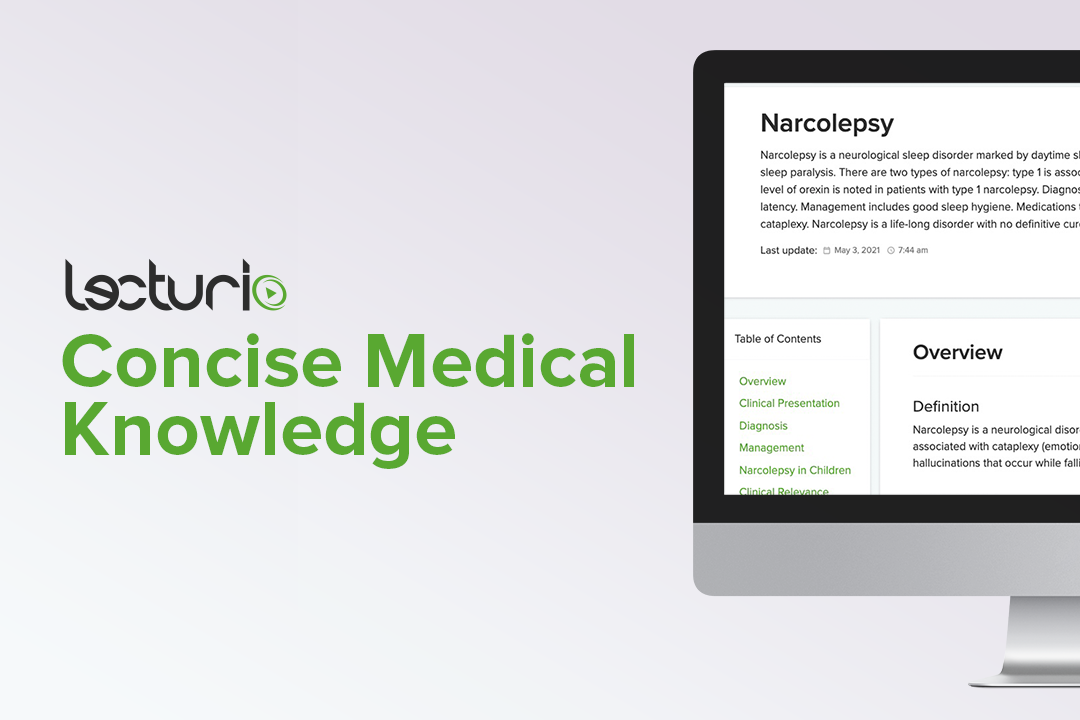Playlist
Show Playlist
Hide Playlist
Narcolepsy: Management
-
Slides Sleep Disorders Narcolepsy.pdf
-
Download Lecture Overview
00:00 When we're managing patients with narcolepsy, the goal of therapy is to improve alertness so that performance is optimized and make sure patients are safe and both of those need to be adequate for normal activities of daily life. There are a number of things we think about in managing patients with narcolepsy. The first is safety, 2nd sleep hygiene. We think about maintaining regular and adequate sleep schedules. Schedule of naps can be helpful and avoiding substances that may precipitate attacks. We want to avoid medications that may worsen sleepiness and you can see some of those here. And monitor for other comorbidities, psychiatric disorders, and obesity can also be seen in this condition. Pharmacotherapy can be used to manage the symptoms of narcolepsy. 00:52 There is no disease modifying therapy but we manage the symptoms of sleep paralysis and cataplexy and excessive daytime sleepiness. Modafinil is the first line agent for promoting wakefulness, is a wakefulness promoting agent. It's a non-amphetamine CNS stimulant so it's a stimulant that doesn't work on by stimulating the systemic circulation but by changing neurotransmission to promote wakefulness and it's typically well tolerated with low abuse potential. The second line agents are the amphethamines and methylphenidate. These are preferred in children. There is slightly higher risk of hypertension, tachycardia, psychosis, anorexia, and abuse with these agents. There are also some newer options for patients not tolerating either of the first or second line therapies and that includes solriamfetol recently approved in 2019. This is a selective dopamine and norepinephrine reuptake inhibitor. And pitolisant approved in 2020. It's an oral histamine inverse agonist. When we're treating cataplexy, we aim to suppress REM sleep by increasing norepinephrine and serotonin. And so we can look at a number of agents that are helpful in preventing and treating cataplexy. The SNRIs, Selective serotonin reuptake inhibitors, tricyclic, antidepressants, sodium oxybate is approved and is really the drug of choice for severe cataplexy. It mediates the effect on gaba receptors and pitolisant. And here you can see a table describing some of the common agents that are used in patients with narcolepsy, their mechanism of action, and important side effects. And you don't need to understand and remember all of the side effects but have a general appreciation for how these drugs work and some of the side effects that can be seen. Modafinil is extremely well tolerated. It can cause light headaches, occasionally anorexia, and nausea. And there is really rare abuse potential. This is the first line agent for treating patients with narcolepsy. Sodium oxybate is our agent of choice for severe cataplexy. It is restrictive in its prescription due to abuse potential but can be quite helpful in patients, again, who have severe cataplexy which is particularly disabling and distressing for patients. Amphetamines are very useful and efficacious but need to be considered with their high risk of abuse. And pitolisant is very well tolerated but has been associated with headaches, insomnia, nausea and QT-QTC prolongation.
About the Lecture
The lecture Narcolepsy: Management by Roy Strowd, MD is from the course Sleep Disorders.
Included Quiz Questions
What medication is the first-line agent for promoting wakefulness in patients with narcolepsy?
- Modafinil
- Amphetamines
- Solriamfetol
- Pitolisant
- Methylphenidate
Customer reviews
5,0 of 5 stars
| 5 Stars |
|
5 |
| 4 Stars |
|
0 |
| 3 Stars |
|
0 |
| 2 Stars |
|
0 |
| 1 Star |
|
0 |




